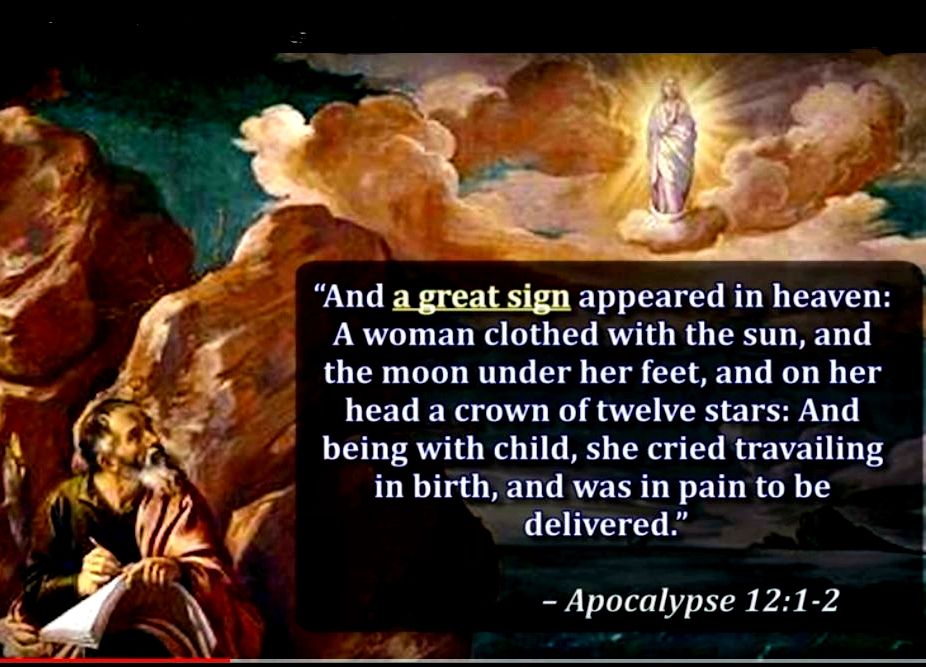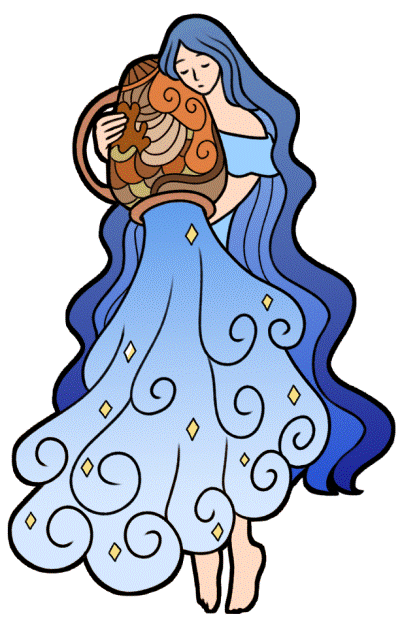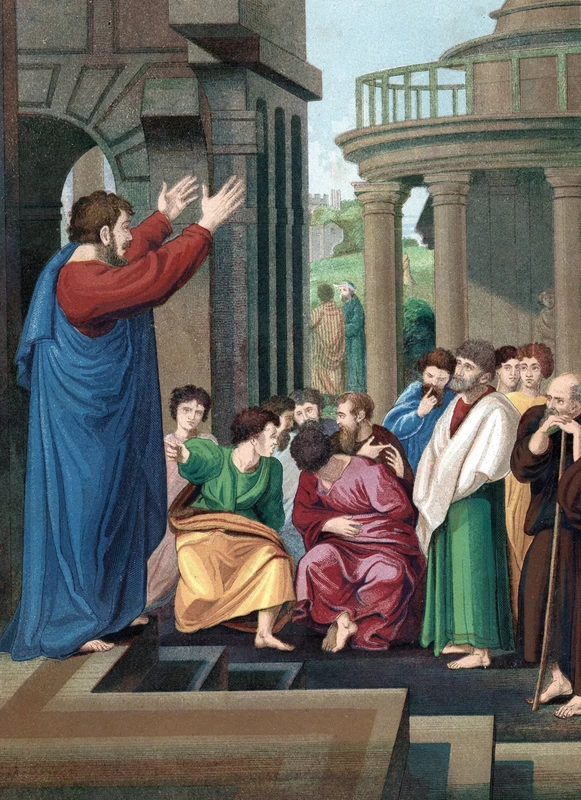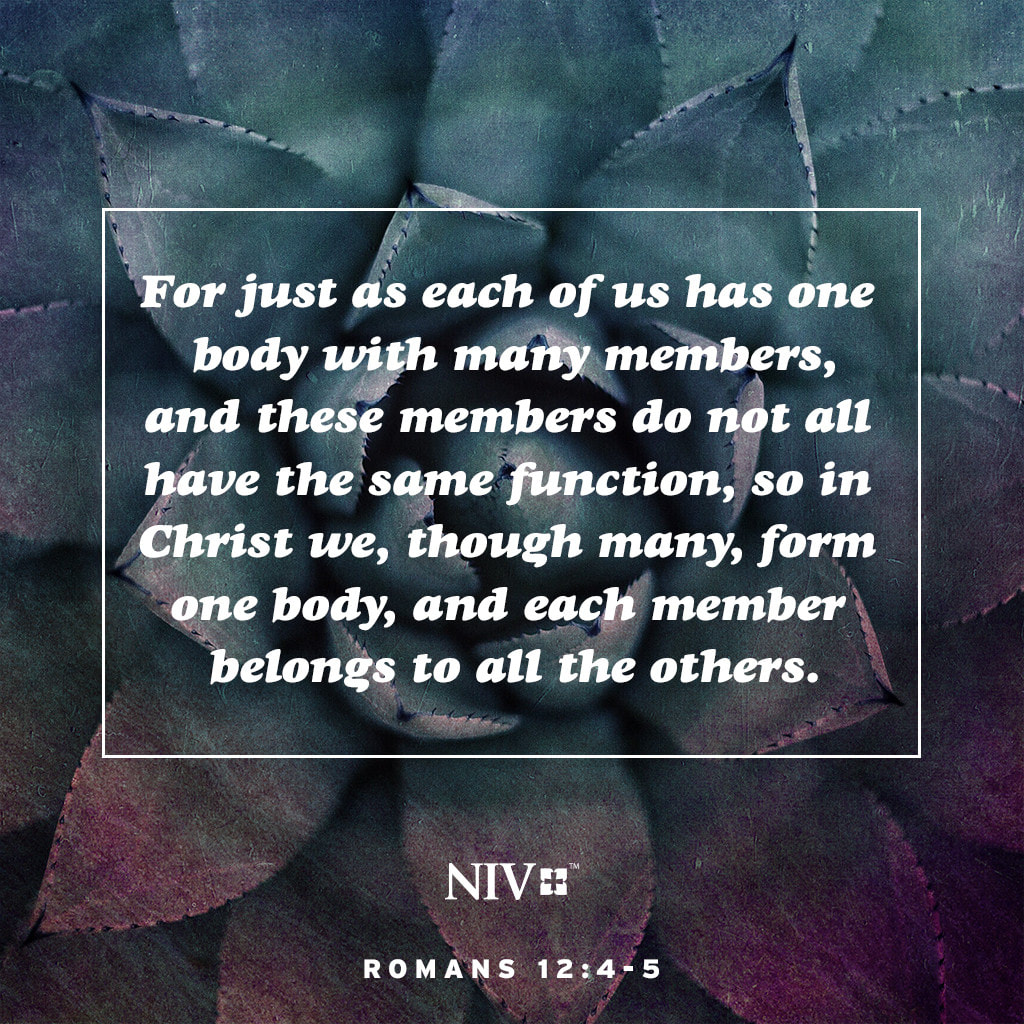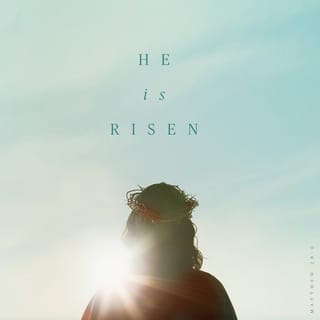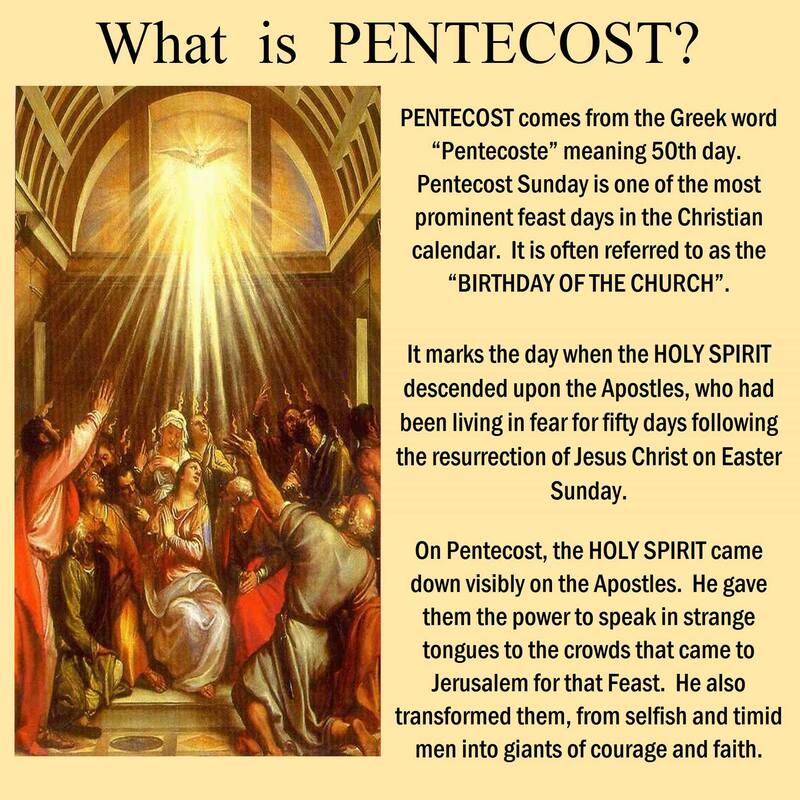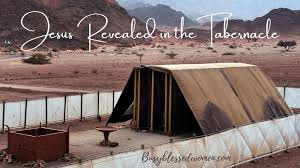The tears of Jesus cause us to ponder. He did not weep because his friend was dead, for he knew he would restore his life. He did not weep until after he asked where to find Lazarus. They invited him to come and see the tomb. No one believed Jesus could help a dead man. Jesus stood between the living and the dead with full knowledge of what would come next; at that point he wept. The crowd thought they knew why he cried — because he loved Lazarus and mourned his loss. But Jesus knew he had not lost Lazarus, so why might he have wept?
The Gospel Transformation Bible (Bryan Chapell, General Editor; Dane Ortlund, Managing Editor) explains:
"Jesus identifies with us in our pain and loss. He comes to us in our weakness and brokeness. Though he knew he was about to raise Lazarus from the dead, Jesus wept when he saw the tears of Mary and her companions. This is Jesus being truly human. As God incarnate, Jesus shows us what he, as God, created man to be—a whole-hearted lover of God and a compassionate lover of fellow image-bearers—summarized in the two great commandments (Matt. 22:34-40).
But as the incarnate God, Jesus' tears in front of Lazarus's tomb are of a differnt order. This is Jesus feeling the weight of the fall—the violation and disintegration of the way things were meant to be. His holy tears are those of the Creator grieving over the way things were meant to be. His holy tears are those of the Creator grieving over the forfeiture of beauty through the intrustion of sin and death. Once again, in the incarnate Lord, we see the heart of the Lamb who would offer his life to overcome our sin and death."
"Jewish funeral custom dictated that even a poor family hire at least two flute players and a professional wailing woman, and this family was not poor. [Jesus was] Outraged—not merely emotionally upset because of empathy, grief, or pain but angry—at (1) the sin, sickness, and death in this fallen world that wreaks so much havoc and generates so much sorrow and/or (2) unbelief itself, for the people were grieving like pagans, 'like the rest of mankind, who have no hope' (1 Thess 4:13) in spirit. Internally, in the core of his being.
[Here wept means to] Shed tears (a Different word than the loud 'weeping' in v. 33)—not because Lazarus was dead (Jesus knew he was about to raise Lazarus from the dead [v. 11]) but because of the same sin that prompted his outrage (see note on v. 33 [above]). Grief and compassion without outrage shrink to mere sentiment, while outrage without grief hardens into self-righteousness, hot-tempered arrogance.
The Jews are right that Jesus loved Lazarus, but they are wrong that his tears evidence grief as despariging as their own. The Jews are right that Jesus could have kept Lazarus from dying but wrong not to trust him and isntead look for dispalys of power."
C.S. Lewis wrote, “We follow One who stood and wept at the grave of Lazarus—not surely, because He was grieved that Mary and Martha wept, and sorrowed for their lack of faith(though some interpret thus) but because death, the punishment of sin, is even more horrible in his eyes than in ours.”
What Changed at the Tomb of Lazarus?At the tomb, Jesus felt deeply moved again. His focus was on the sin, sickness, and death of the fallen world. Perhaps he stood there knowing what he would face at his own death, in order to redeem mankind from sin. He told them to remove the stone, but Martha protested about the smell since it had been four days already. He again told the people that if they believed they would see the glory of God. He wanted to inspire a deeper faith, he was and is the Messiah. He emphasized in his prayer to the Father that he wanted people to believe that God his Father had sent him. Like a drum roll before a great announcement or beginning, Jesus spoke these words to get people’s attention.
Then he shouted, “Lazarus come forth.” We’re told Jesus used a loud voice, probably one with power and might that all could hear. Jesus used a miracle to inspire faith in what God was doing through him. By the time Jesus entered the city of Jerusalem, on what we now refer to as Palm Sunday, many people had heard of this miraculous resurrection.
"As Lazarus was undeniably physically dead, so we are spiritually dead and separated from God in our own sins. Like Lazarus, any hope of life is gone, and the stench of our spiritual decomposition is pungent. As Paul explained, we 'were dead in [our] transgressions and sins ... we were by nature deserving of wrath' (Eph 2:1-3). But just as Jesus raised Lazarus from his physical death, if we believe that Jesus is the resurrection and the life, he promises to raise us from our spiritual death and give us the promise of a physical resurrection on the last day."
The village of Bethany still exists today. It’s called el-’Aziriyeh. That means the ‘the place of Lazarus.’ News about Lazarus amazed people so much that this miracle gave the town a new identity and still inspires people to believe in Jesus.
What Reactions Do We Have When We Think about Lazarus?The dead man stood and walked; he came back to life after days in a tomb. The people must have stood in shock, unmoving and simply staring. Jesus had to prompt them to move; he said, “Unbind him and let him go.” The people who came with Mary and Martha believed, but a few left and reported the news to the Pharisees. Those religious leaders did not react with amazement or feel joy for the sisters who had their brother restored. They did not believe in the Messiah; they saw Jesus as a man who was a threat to their agenda. They reacted out of selfish interests; in John 11:47-53, they reveal their motives and anger toward Jesus.
The Pharisees worried about keeping their position of authority, their standing with the Roman leaders, and their control over the nation of Israel. Caiaphas, the high priest, reminded them that it would be better for one man to die for the people than for the nation to perish. The Pharisees desired to kill Jesus and stop his work.
The general population sought Jesus. They looked for Lazarus with Jesus. They sought hope, not power. It beckons us to listen and respond.
Why Does God Not Answer Some Prayers Right Away or Sometimes Not at All?You may find yourself asking:
- Why did Jesus wait so long before answering the plea of Mary and Martha?
- Why does he wait before he responds to some of our prayers?
- Why does he sometimes not answer the way we hope?
- How can the story of Lazarus help us understand?
When we turn away and get distracted by the world and our daily worries, Christ will turn us back to what’s important. In Luke 10:41-42, Jesus reminds Martha that only one thing really matters, and Mary chose that in sitting at his feet and listening to him. Sitting at the feet of God and putting our trust in him is the best thing we can do every day.
With the Holy Spirit's help we can choose to give up control, we can choose to trust our future to God and patiently wait for Jesus to respond. God wants the main story to be about him and not us; he will always have compassion for us, but his greater purpose is to bring glory to his name and bring people into lasting faith.
-------------
The name, Lazarus, in Greek is Lazaros, which comes from the Hebrew, Eleazar, meaning “He, (God) has helped. Lazarus in the Bible lived in Bethany, two miles southeast of Jerusalem and was the brother of Martha and Mary. One day, he died. But Jesus chose Lazarus to demonstrate His power as he foreshadowed what would happen to Himself on Easter.
Who Was Lazarus? He was a friend to Jesus and a brother to Mary and Martha.Lazarus’s story appears in an account in John 11:1-44, when a messenger shows up where Jesus was ministering and requests Jesus come immediately to the home of a sick man. Lazarus lived in a nearby town, Bethany, two miles southeast of Jerusalem and was the brother of Martha and Mary.
Jesus had previously visited the three siblings and had enjoyed the family’s hospitality. His sister, Mary, would sit at the Master’s feet and listen to his words. Martha, Mary’s sister was the one who complained to Jesus that her sister needed to help her in the kitchen (Luke 10:38-42).
When Jesus received the invitation, the messenger told Jesus that Lazarus, “He whom you love is ill.” This phrase, “He whom you love,” is significant. Yes, Jesus loved all he came in contact with, but the words hints at how Jesus and Lazarus were true friends. He had visited with Lazarus and his sisters in their home and broke bread with them.
And it may have been because of that very closeness that Jesus decided to use his relationship with Lazarus to showcase his power. So, instead of racing to his friend’s bedside, he stayed two more days where He was before deciding to go to Bethany and awaken His friend.
To our human minds this delay might have seen uncaring, but remember Jesus was God incarnate and knew Lazarus’s life span. Jesus took his time before leaving for Bethany, knowing that the Jewish culture deemed a person dead after three days. Was He waiting so that those around Lazarus would have no doubt that their friend was gone? Very possibly.
After announcing His friend was dead, Jesus arrived at Martha and Mary’s house. By this time the women’s brother had been dead for four days. Martha chastised Jesus, telling him that her brother wouldn’t have died if he had come sooner. I’m sure she loved her brother dearly, but Martha was fretting over another issue. Because of the economic structure of ancient Jewish culture, Martha and her sister Mary probably weren’t permitted to earn a living and needed their brother’s financial support. Now that was gone. It was a catastrophe on many levels for them to lose Lazarus.
Jesus, even knowing the good outcome, wept for his friend. Can you imagine a friendship so true that the Son of God would stand at your grave with tears running down His face? Lazarus must have been a great man.
Then after Jesus grieved, He went to the tomb and called to his dead friend, “Lazarus, come out.” Immediately Lazarus appeared out of the tomb. Jesus chose Lazarus to demonstrate His power as he foreshadowed what would happen to Himself on Easter.
This powerful incident upset the Pharisees and Chief Priests who felt they were losing a grip on their people. They were concerned that this man who did signs and wonders would cause problems with the Romans. It was right after this miracle that these evil leaders plotted to kill Jesus, and as the Bible tells us, they were successful in crucifying Him.
Most likely, Lazarus lived years after Jesus died to always carry the mark of a resurrected man. (Jesus resurrected two other people but it was right after they had died). What an honor for Lazarus to not only be resurrected from the dead but to also be the last major miracle Jesus ever preformed. Lazarus must have spent the rest of his life telling the story to all who would listen. Those who hated Jesus despised his story, but those who loved Him had resurrection hope in the form of a man named Lazarus.
"Caiaphas spoke more truth than he knew: when Caiaphas voiced his opinoin to the Sanhedrin, God was also speaking, even if Caiaphas and God intended different meanings through the same words (cf. Acts 4:27-28). Both Caiaphas and God want Jesus to die as a substitute and a sacrifice: either Jesus dies or the nation dies. Yet the distinction between what Caiaphas means and what God means is clear: Jesus dies for the nation not by removing political trouble but by taking away the sins of those who believe in him."
Lazarus aroused curiosity even during the time of Jesus. In John 12:9, we read that a crowd followed Jesus but not only to see him, they also came to see Lazarus who was an ordinary man who had a life and death altering experience that intrigued them and still amazes those who read it.
The account goes beyond the miracle to see how curious people and enemies of Jesus reacted. Like any news station that doesn’t like the story, enemies wanted to bury the news, kill the rescued man, and bury him again. Those who wondered about it, wanted to meet Jesus and Lazarus, to find out more.
Lazarus means God HAS helped, past tense, already done. To have a name that in hindsight is a prophecy is remarkable. His parents named him long before he needed the Christ to restore his life. Thus, his very name gives us all hope. How amazing that we can hope before we ever have a need. It’s Jesus who makes the difference. Lazarus went from ill to dead and then laid in a tomb wrapped in burial cloths for four days. He took no active part in the drama until Jesus spoke to him.
Lazarus become so ill that his sisters sent for Jesus. The story of the death of Lazarus is found in John 11:1-12:9. When Jesus heard that Lazarus was unwell, he stayed put for two more days. He didn’t rush off to heal his friend or even head to a town closer to his friend. He simply stated that this illness was for the glory of God and would not lead to death. His words should have assured and comforted his friends. His absence probably worried the sisters. They had seen many miracles and knew Jesus had God’s power, so this should have helped them trust Jesus.
No further news came before Jesus announced that Lazarus had died, and he wanted to go to him. He told the disciples he needed to awaken Lazarus from sleep. Jesus knew and loved the family. His sister Mary had washed and anointed the feet of Jesus. Finally, he headed to Bethany. The reaction of people involved with Lazarus and Jesus reflected human responses. Mary and Martha sent word to Jesus to help them but gave up waiting once Lazarus died. They allowed the anointing and wrapping of burial cloths and placed Lazarus in the tomb. They lost hope that Jesus could help.
The disciples tried to prevent Jesus from heading to Bethany. They warned him that people in Judea planned to stone him. They feared wicked men over trusting Jesus. They felt the story ended with death. They seemed to ignore the words that Jesus wanted to wake up Lazarus. Friends of Mary followed her when she went out to meet Jesus who had sent for her. They thought they were going to the tomb to weep with her. They planned to console her and had no thoughts of a reason to celebrate. That placed them within hearing of the conversation between Mary, Martha, and Jesus, one in which Jesus urged them to believe in his power.
Lazarus remained still in the tomb as important words passed. Martha went to meet Jesus when she heard he came. He greeted her with the words, “Your brother will rise again.” Martha responded as many grieving loved ones respond to platitudes and well meant words. It probably seemed empty to her and she vaguely said she knew about the resurrection on the last day. Jesus emphasized his meaning by stating, “I am the resurrection and the life. Anyone who believes in me will live. Do you believe this” (John 11:24-25)? Martha responded, that she believed he is the Christ and the Son of God.
Lazarus remained in the tomb, waiting to be called, but Jesus was not even in the village yet. Martha sent her sister Mary to Jesus, and she fell at the feet of Jesus and cried in despair that her brother would not have died had he come. She showed she believed in his power to heal a person before they died. Jesus saw her tears and all the people crying. The weeping moved him to compassion. John 11:33relays that Jesus was moved and troubled. We learn the Jesus cares deeply about people.
Lazarus, Hebrew Eleazar, (“God Has Helped”), either of two figures mentioned in the New Testament.
Flourished:
c.1 - 101
See all related content →The miraculous story of Lazarus being brought back to life by Jesus is known from the Gospel According to John (11:1–45). Lazarus of Bethany was the brother of Martha and Mary and lived at Bethany, near Jerusalem. The account notes that Jesus loved Lazarus and his sisters and that when Lazarus died of illness, Jesus wept and was “greatly disturbed.” Although Lazarus had been entombed for four days by the time Jesus arrived at Bethany, he was raised by Jesus from the dead and emerged from the tomb wearing his burial cloths. This miracle, witnessed by many Jews who had come to grieve with the family, inspired many to believe in Jesus as the Christ. Lazarus was also present when his sister Mary anointed the feet of Jesus with expensive perfume (John 12:1–3).
Lazarus is also the name given by the Gospel According to Luke (16:19–31) to the beggar in the parable of the rich man and Lazarus. It is the only proper name attached to a character in the parables of Jesus.
----------------
Lord, the one you love is sick,” said the message. Jesus’ friend Lazarus was clinging to life when the message came from Lazarus’ sisters Mary and Martha (see John 11).
Jesus did not seem troubled by the news. As a matter of fact, He declared, “This sickness will not end in death. No it is for God’s glory so that God’s Son may be glorified through it.”
And then Jesus did the unexpected — NOTHING! He stayed where he was for two more days and did absolutely nothing while Lazarus died. He had healed so many people before, so why didn’t He go to Lazarus immediately and make him well. How could he sit there and do nothing?
Don’t you hate it when God doesn’t do what you think He should? I am sure most of us at one time in life have run into a situation and thought, “How could God have allowed that to happen?”
This is what Mary and Martha were thinking when Jesus finally arrived four days after Lazarus’ death.
Both of the sisters questioned Jesus upon his arrival saying, “Lord, if you had been here, my brother would not have died.”
In their hearts, they were full of disappointment with God. Jesus had healed so many others. Why now did he not heal his own friend? How could Jesus have let them down like this? The sisters loved Jesus and believed in Him, but were confused by his lack of action.
Jesus told Martha, “I am the resurrection and the life. He who believes in me will live even though he dies; and whoever lives and believes in me will never die” (John 11:25,26). This quote from Jesus is a cornerstone of Christian theology and doctrine.
Good doctrine and theology were not helping the disappointment and confusion to fade away from these grief-stricken women though.
Then Jesus, the resurrection and the life, stepped up to the tomb and called forth Lazarus from the realm of the dead. Jesus statement — “I am the resurrection and the life” — along with his power to raise Lazarus from the dead teach us that everything the Bible has to say about heaven, hell, and the promise of eternal life is wrapped up in the person of the Lord, Jesus Christ. He holds eternity in his hands, so He alone should be trusted with our eternity.
The raising of Lazarus teaches us another lesson though. When God seems to be doing nothing, He may be doing more than you could ever imagine. Jesus had declared that Lazarus’ sickness was for the glory of God. Jesus knew God would be totally glorified in the situation at hand.
When Lazarus died, Jesus was just getting started. He used Lazarus’ situation to bring the utmost glory to His father. No he didn’t do what we were expecting (heal Lazarus) — He did something better.
I know there will be times in the future when God doesn’t do what I expect, or think He should do. I know in every situation, however, He can and will bring greater glory to Himself. If He doesn’t do what I think He should, it is very probable that God has something better in mind.
Are you dealing with disappointment right now? Has God acted in a way that you would not have expected?
Take heart friend, Jesus is the resurrection and the life. He can breathe life into any situation you are dealing with.
Entrust your situation to God. Then ask God to use your circumstances for His honor and glory. Entreat Him to bring forth the greatest glory possible in your life and situation. And then watch out to see what God does. It may seem like He is doing is nothing at the moment, but He may be doing more than you could ever imagine. If you don’t believe me, just ask Lazarus. And that’s the Word.
----------------
Lazarus of Bethany (Latinised ultimately from the Aramaic: אלעזר, Elʿāzār, cf. Heb. Eleazar, "God helped"), also venerated as Righteous Lazarus, the Four-Days Dead in the Eastern Orthodox Church,[4] is the subject of a prominent sign of Jesus in the Gospel of John, in which Jesus restores him to life four days after his death. The Eastern Orthodox and Catholic traditions offer varying accounts of the later events of his life.
In the context of the seven signs in the Gospel of John, the raising of Lazarus at Bethany – today the Palestinian town of Al-Eizariya, which translates to "the place of Lazarus" – is the climactic narrative: exemplifying the power of Jesus "over the last and most irresistible enemy of humanity: death. For this reason, it is given a prominent place in the gospel."[5]
The name Lazarus is frequently used in science and popular culture in reference to apparent restoration to life; for example, the scientific term Lazarus taxon denotes organisms that reappear in the fossil record after a period of apparent extinction. There are also numerous literary uses of the term.
A distinct character of the same name is also mentioned in the Gospel of Luke in the parable of the Rich man and Lazarus..
The raising of Lazarus is a miracle of Jesus recounted only in the Gospel of John (John 11:1–44) in the New Testament in which Jesus raises Lazarus of Bethany from the dead four days after his entombment.[6][7][8] The event is said to have taken place at Bethany. In John, this is the last of the miracles that Jesus performs before the passion, crucifixion and his own resurrection.
The biblical narrative of the raising of Lazarus is found in chapter 11 of the Gospel of John.[9] A certain Eleazer (whence Lazarus) is introduced as a follower of Jesus who lives in the town of Bethany near Jerusalem.[10] He is identified as the brother of the sisters Mary and Martha. The sisters send word to Jesus that Lazarus, "he whom thou lovest," is ill.[11] Jesus tells his followers: "This sickness will not end in death. No, it is for God's glory so that God's Son may be glorified through it." Instead of immediately traveling to Bethany, according to the narrator, Jesus intentionally remains where he is for two more days before beginning the journey. The disciples are afraid of returning to Judea, but Jesus says: "Our friend Lazarus is asleep, but I am going to awaken him." When the apostles misunderstand, he clarifies, "Lazarus is dead, and for your sake I am glad I was not there, so that you may believe."
When Jesus arrives in Bethany, he finds that Lazarus is dead and has already been in his tomb for four days. He meets first with Martha and Mary in turn. Martha laments that Jesus did not arrive soon enough to heal her brother ("if you had been here, my brother would not have died") and Jesus replies with the well-known statement, "I am the resurrection, and the life: he that believeth in me, though he were dead, yet shall he live: And whosoever liveth and believeth in me shall never die".[12] Martha affirms that she does truly believe and states, "Yes, Lord. I believe that you are the Messiah, the Son of God, who has to come into the world." Later the narrator here gives the famous simple phrase, "Jesus wept".[13]
In the presence of a crowd of Jewish mourners, Jesus comes to the tomb. Jesus asks for the stone of the tomb to be removed, but Martha interjects that there will be a smell. Jesus responds, "Did I not tell you that if you believed, you would see the glory of God?" Over the objections of Martha, Jesus has them roll the stone away from the entrance to the tomb and says a prayer. They take the stone away then Jesus looks up and says: "Father, I thank you that you have heard me. I knew that you always hear me, but I said this for the benefit of the people standing here, that they may believe that you sent me." He then calls Lazarus to come out ("Come forth") and Lazarus does so, still wrapped in his grave-cloths. Jesus then calls for someone to remove the grave-cloths, and let him go.
The narrative ends with the statement that many of the witnesses to this event "believed in him." Others are said to report the events to the religious authorities in Jerusalem.
The Gospel of John mentions Lazarus again in chapter 12. Six days before the Passover on which Jesus is crucified, Jesus returns to Bethany and Lazarus attends a supper that Martha, his sister, serves.[14] Jesus and Lazarus together attract the attention of many Jews and the narrator states that the chief priests consider having Lazarus put to death because so many people are believing in Jesus on account of this miracle.[15]
The miracle of the raising of Lazarus, the longest coherent narrative in John aside from the Passion, is the culmination of John's "signs". It explains the crowds seeking Jesus on Palm Sunday, and leads directly to the decision of Caiaphasand the Sanhedrin to kill Jesus.
A resurrection story that is very similar is also found in the controversial Secret Gospel of Mark, although the young man is not named there specifically. Some scholars believe that the Secret Mark version represents an earlier form of the canonical story found in John.[16]
InterpretationEditTheological commentaryEditThe miracle of the raising of Lazarus is the climax of John's "signs". It explains the crowds seeking Jesus on Palm Sunday, and leads directly to the decision of Caiaphas and the Sanhedrin to plan to kill Jesus. Theologians Moloney and Harrington view the raising of Lazarus as a "pivotal miracle" which starts the chain of events that leads to the Crucifixion of Jesus. They consider it as a "resurrection that will lead to death", in that the raising of Lazarus will lead to the death of Jesus, the Son of God, in Jerusalem which will reveal the Glory of God.[17]
The Catechism of the Catholic Church states that the miracle performed by Jesus returned Lazarus to ordinary earthly life as with the son of the widow of Nain and Jairus' daughter and that Lazarus and the others who were raised from the dead would later die again.[18]The Russian Orthodox Church's Catechism of St. Philaret writes that among the miracles performed by Jesus was the raising of Lazarus from the dead on the fourth day after Lazarus' death.[19] In the Southern Baptist Convention's 2014 resolution On The Sufficiency Of Scripture Regarding The Afterlife, the raising of Lazarus is noted among the Bible's, "explicit accounts of persons raised from the dead", and comments on those raisings that, "in God's perfect revelatory wisdom, He has not given us any report of their individual experience in the afterlife".[20]
John Calvin notes that, "not only did Christ give a remarkable proof of his Divine power in raising Lazarus, but he likewise placed before our eyes a lively image of our future resurrection."[21] French Protestant minister Jakob Abbadie wrote that Jesus had intentionally delayed his return to Bethany for, "four days, that it might not be said, he [Lazarus] was not really dead."[22] In 2008, Pope Benedict XVIsaid that the Gospel story of the raising of Lazarus, "shows Christ's absolute power over life and death and reveals His nature as true man and true God" and that "Jesus' lordship over death does not prevent him from showing sincere compassion over the pain of this separation."[23]
Matthew Poole and others saw Lazarus' ability to move despite having his hands and feet wrapped together as a second miracle, but Charles Ellicott disputed that Lazarus' movement would have been restricted by his burial garments.[24][25]
Narrative criticismEdit
New Testament scholars have sought to explain how the story of Lazarus was probably composed.New Testament scholars try to establish how John's narrative of the raising of Lazarus and the subsequent feet-anointing of Jesus by Mary of Bethany (John 11:1–12:11,17) was composed by seeking to explain its apparent relationships with the older textual traditions of the Synoptic Gospels (Mark, Matthew, and Luke). The author of John seems to have combined elements from several – apparently originally unrelated – stories into a single narrative. These include the unnamed woman's head-anointing of Jesus in Bethany (Mark 14, Matthew 26), the sinful woman's feet-anointing (and hair-wiping) of Jesus in Galilee (Luke 7; these first two may have a common origin, the Lukan account likely being derived from Mark), Jesus' visit to Martha and Mary in the unnamed Galilean village (Luke 10), Jesus' parable of the rich man and Lazarus (Luke 16), and possibly others involving Jesus' miraculous raising of the dead (the raising of Jairus' daughter and the raising of the son of the widow of Nain). Meanwhile, other elements were removed or replaced; for example, Simon the Leper/Simon the Pharisee was replaced by Lazarus as the host of the feast in Jesus' honour, and Bethany in Judea was chosen as the setting, while most elements of John's narrative correspond to traditions that the Synoptics set in Galilee. Scholars pay particular attention to verse John 11:2 (and verse John 11:1), which may represent an effort by the author or a later redactor to stress a connection between these stories that is, however, not found in the older canonical gospels.[26][27][28][29] They further note that the actual anointing will not be narrated until verse 12:3, and that neither Mary, nor Martha, nor the village of these sisters, nor any anointing is mentioned in the Gospel of John before this point, suggesting that the author (or redactor) assumes the readers already have knowledge of these characters, this location and this event, and wants to tell them that these were connected (which he apparently knew the readers did not commonly know/believe yet) long before giving the readers more details.[30][26] Elser and Piper (2006) posited that verse 11:2 is evidence that the author of the Gospel of John deliberately mixed up several traditions in an 'audacious attempt (...) to rework the collective memory of the Christ-movement.' The author did not strive to give a historically accurate account of what had happened, but instead, for theological purposes, combined various existing narratives in order to construct Lazarus, Mary and Martha of Bethany as a prototypical Christian family, whose example is to be followed by Christians.[26]
Earlier commentators include deist Lysander Spooner, who wrote in 1836 that it was unusual that the Synoptic Gospels (Matthew, Mark and Luke) do not mention the miracle of the raising of Lazarus, which seems as if it could have been a demonstration of the miraculous powers of Jesus. The Synoptic Gospels do include passages concerning the activities of the sisters of Lazarus but fail to mention their brother's resurrection. Spooner wrote that this seemed to indicate that the author of the Gospel of John, "was actually dishonest, or that he took up, believed and recorded a flying story, which an occurrence of some kind had given rise to, but which was without any foundation in truth."[31] In 1892, agnostic speaker Robert G. Ingersoll found the narrative historically implausible, writing that, if Lazarus had in fact died, potentially participating in an afterlife, and then subsequently had been resurrected, the experiences Lazarus could have shared with others would likely have been more interesting than everything else in the New Testament, would have drawn widespread attention to Lazarus during his lifetime and might have made him less afraid than others that did not have his experience when Lazarus approached death for a second time.[32] Exegesis in the Interpreter's Bible (1953) comparing the raising of Lazarus to other resurrections in the Bible comments that, "The difference between revival immediately after death, and resurrection after four days, is so great as to raise doubts about the historicity of this story, especially in view of the unimaginable details in vs. 44. Yet there are features in this story which have the marks of verisimilitude."[33]
Tomb of LazarusEdit
Reputed tomb of Lazarus in al-EizariyaThe reputed first tomb of Lazarus is in Bethany and continues to be a place of pilgrimage to this day. Several Christian churches have existed at the site over the centuries. Since the 16th century, the site of the tomb has been occupied by the al-Uzair Mosque. The adjacent Roman CatholicChurch of Saint Lazarus, designed by Antonio Barluzzi and built between 1952 and 1955 under the auspices of the Franciscan Order, stands upon the site of several much older ones. In 1965, a Greek Orthodox church was built just west of the tomb.
The entrance to the tomb today is via a flight of uneven rock-cut steps from the street. As it was described in 1896, there were twenty-four steps from the then-modern street level, leading to a square chamber serving as a place of prayer, from which more steps led to a lower chamber believed to be the tomb of Lazarus.[34] The same description applies today.[35][36]
The first mention of a church at Bethany is in the late 4th century, but both the historian Eusebius of Caesarea[37] (c. 330) and the Bordeaux pilgrim do mention the tomb of Lazarus. In 390 Jerome mentions a church dedicated to Saint Lazarus, called the Lazarium. This is confirmed by the pilgrim Egeria in about the year 410. Therefore, the church is thought to have been built between 333 and 390.[38] The present-day gardens contain the remnants of a mosaic floor from the 4th-century church.[39] The Lazarium was destroyed by an earthquake in the 6th century, and was replaced by a larger church. This church survived intact until the Crusader era.
In 1143 the existing structure and lands were purchased by King Fulk and Queen Melisende of Jerusalem and a large Benedictine convent dedicated to Mary and Martha was built near the tomb of Lazarus. After the fall of Jerusalem in 1187, the convent was deserted and fell into ruin with only the tomb and barrel vaulting surviving. By 1384, a simple mosque had been built on the site.[36] In the 16th century, the Ottomans built the larger al-Uzair Mosque to serve the town's (now Muslim) inhabitants and named it in honor of the town's patron saint, Lazarus of Bethany.[39]
Play media
Lazarus' tomb, BethanyAccording to the Catholic Encyclopedia of 1913, there were scholars who questioned the reputed site of the ancient village (though this was discounted by the Encyclopedia's author):
Some believe that the present village of Bethany does not occupy the site of the ancient village; but that it grew up around the traditional cave which they suppose to have been at some distance from the house of Martha and Mary in the village; Zanecchia (La Palestine d'aujourd'hui, 1899, I, 445ff.) places the site of the ancient village of Bethany higher up on the southeastern slope of the Mount of Olives, not far from the accepted site of Bethphage, and near that of the Ascension. It is quite certain that the present village formed about the traditional tomb of Lazarus, which is in a cave in the village. The identification of this cave as the tomb of Lazarus is merely possible; it has no strong intrinsic or extrinsic authority. The site of the ancient village may not precisely coincide with the present one, but there is every reason to believe that it was in this general location."[40]

 RSS Feed
RSS Feed











